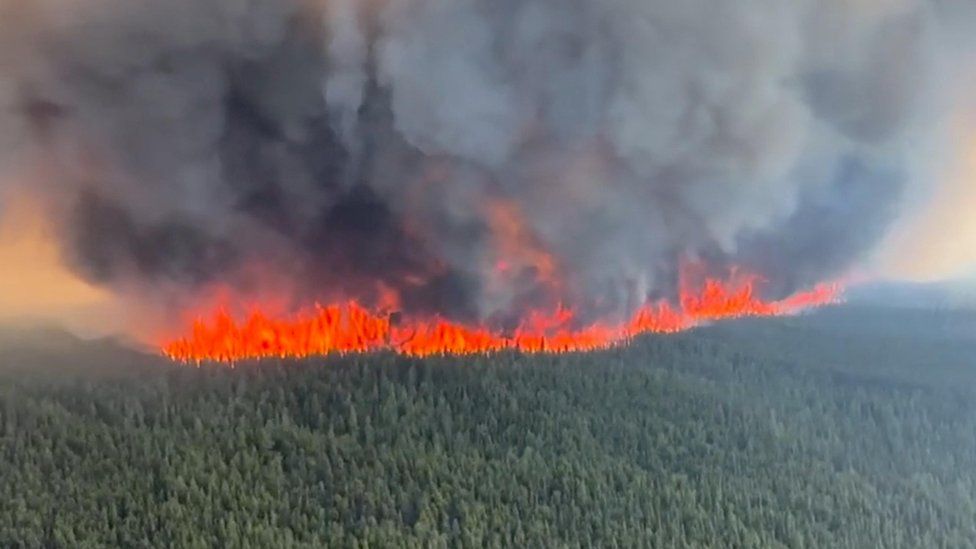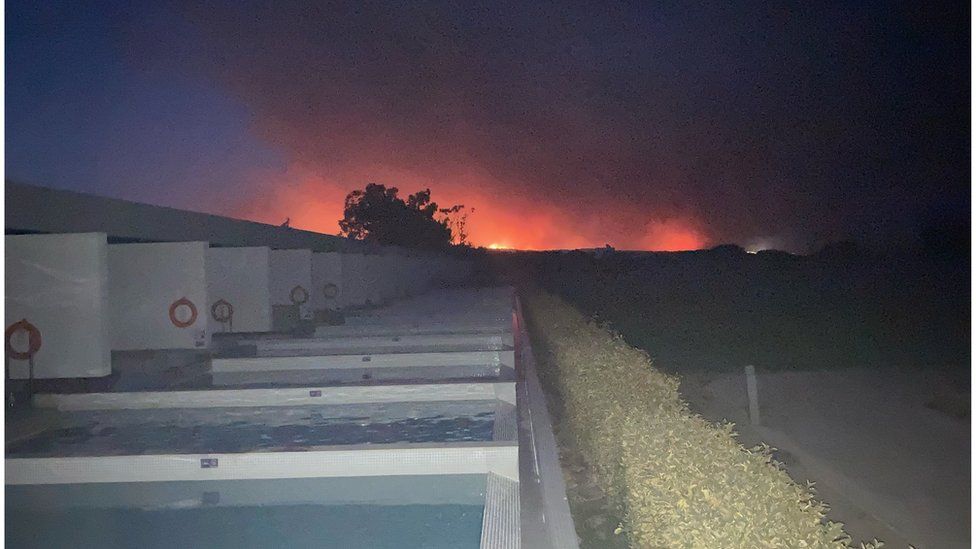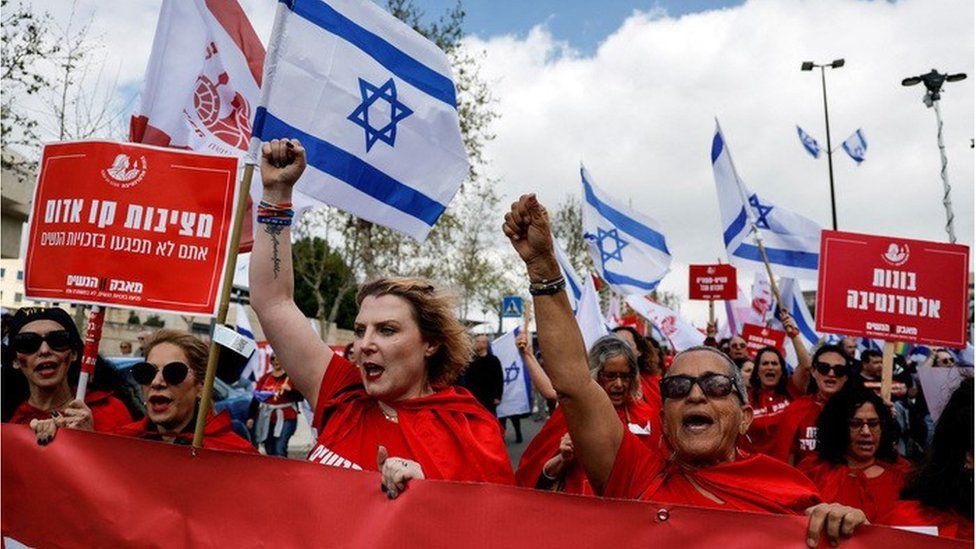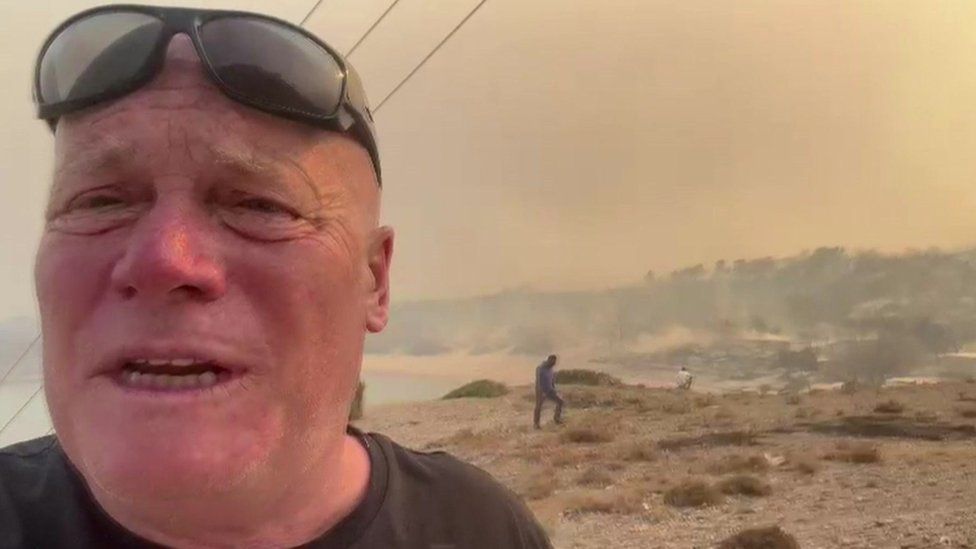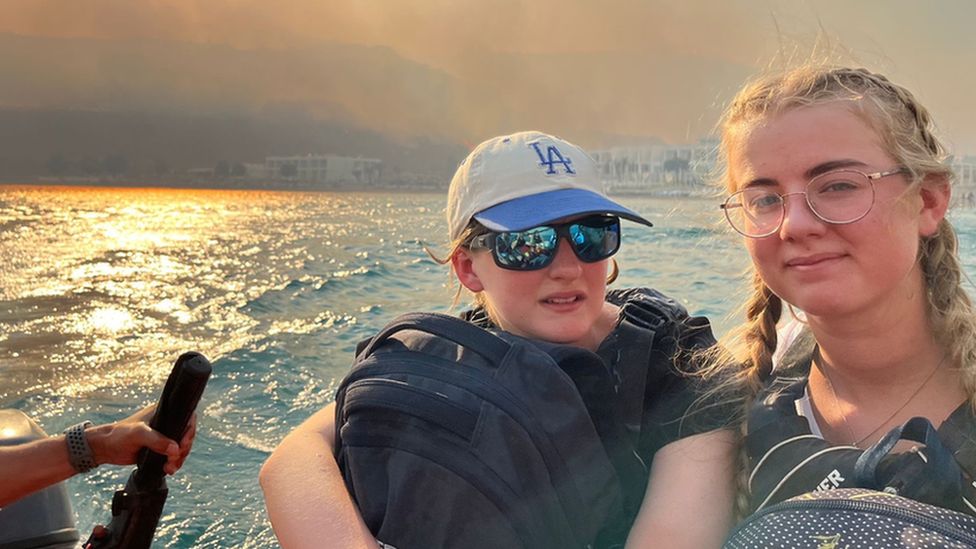As smoke from intense Canadian wildfires is blown south along the continent's east coast, pollution warnings have been issued for large portions of North America.
While conditions have improved in some of those cities, including Toronto, Ottawa, New York, and Washington, DC, others, including St. Louis, Missouri, and Louisville, Kentucky, are expected to experience unhealthy air quality in the coming days.
More than 150 fires are burning in Quebec, and there are more than 420 active fires in the entire country of Canada. .
The Donnie Creek fire, which has spread to more than 3,000 square kilometers in British Columbia, is the largest wildfire complex in eastern Canada.
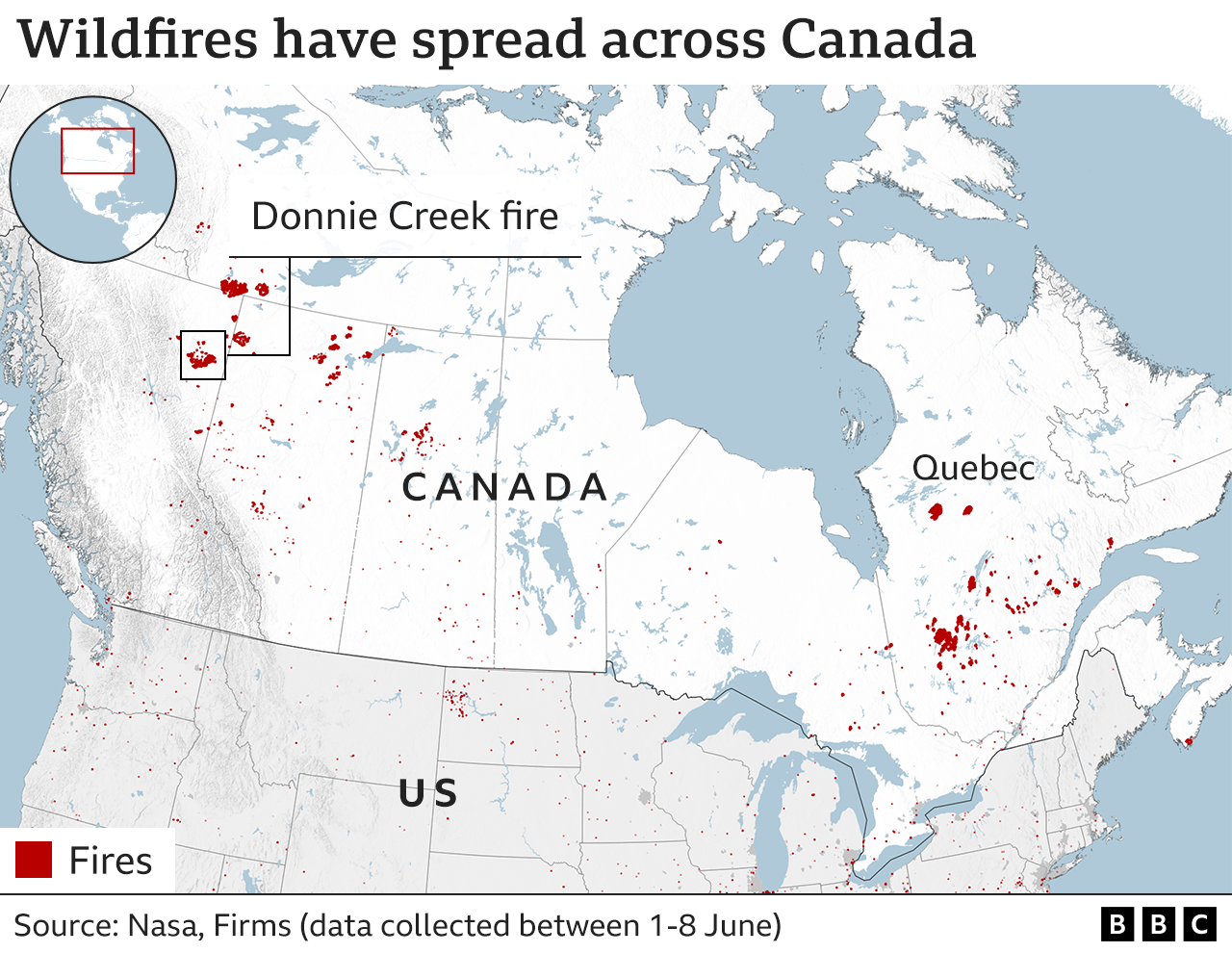
Nearly 100 million people in the US and Canada would suffer from extremely poor air quality, according to the Canadian government.
The Ontario cities of Toronto and Ottawa were severely affected earlier in the week; views from Toronto's iconic CN Tower revealed the intensity of the smoke in those areas.
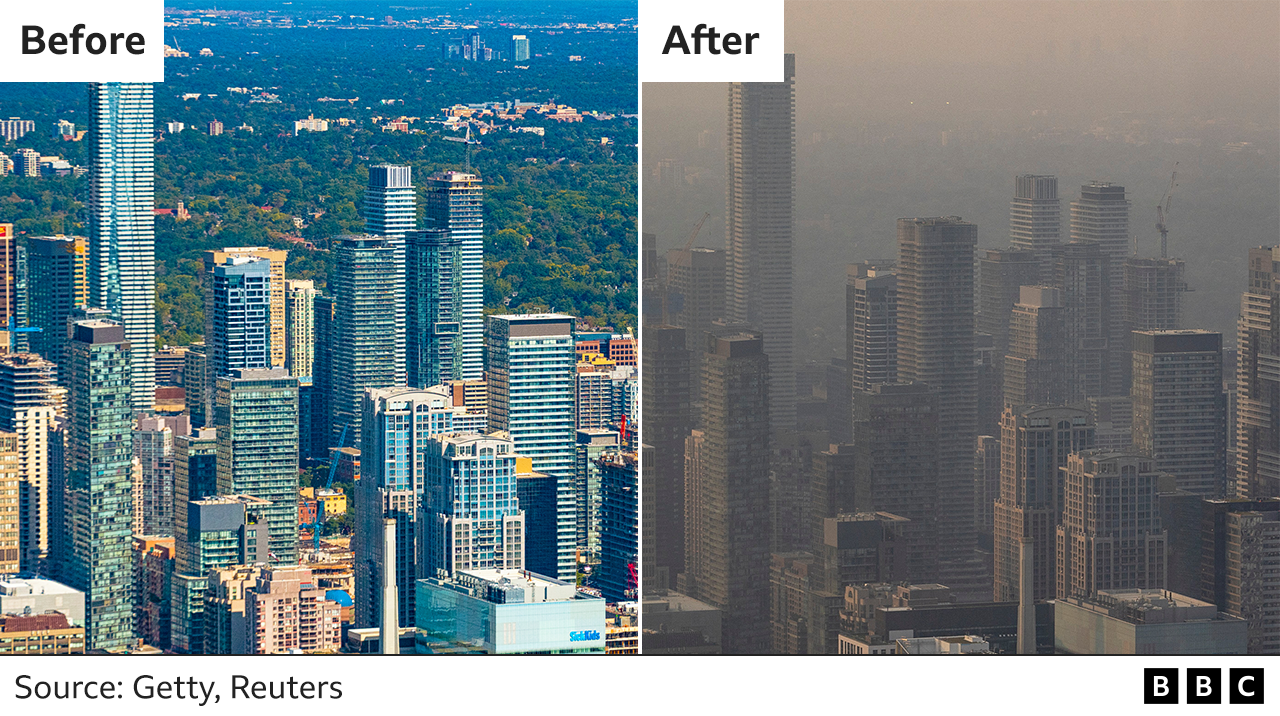
Environment Canada deemed the air quality in Ontario to be "very high risk" on Wednesday morning, and despite a brief improvement later in the day, officials warned the situation was likely to return to its previous state and remain dangerously high until the weekend.
Cities such as Philadelphia, New York, and Washington, DC, have also been dealing with some of the worst air quality in years.
The Empire State Building and other famous buildings in New York City were obscured by an orange haze.
The smoke gave a view of the Manhattan Bridge that has grown to be well-liked by photographers and tourists over the years a distinct sepia tone.

The Hudson River was also no longer visible from the top of the Rockefeller Center due to Manhattan's dominant skyline of skyscrapers.
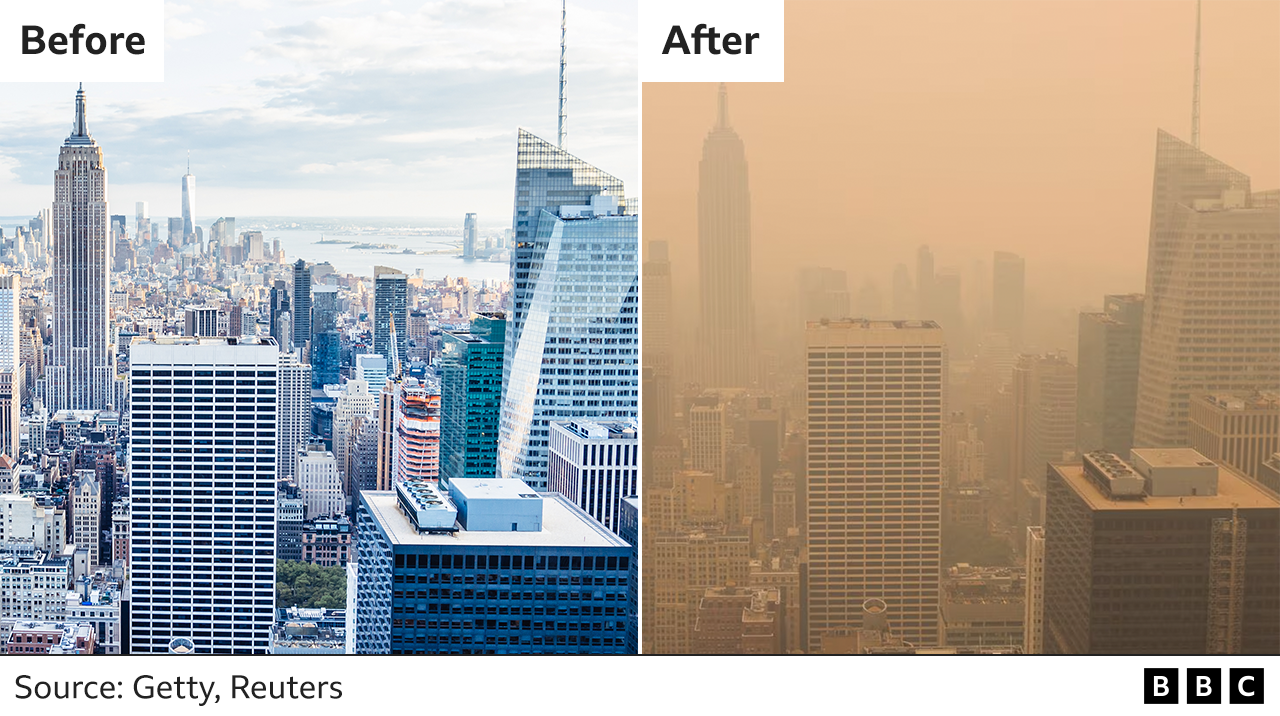
US President Joe Biden said the fires served as a "stark reminder of the impacts of climate change" as the haze rolled in over the US Capitol building.
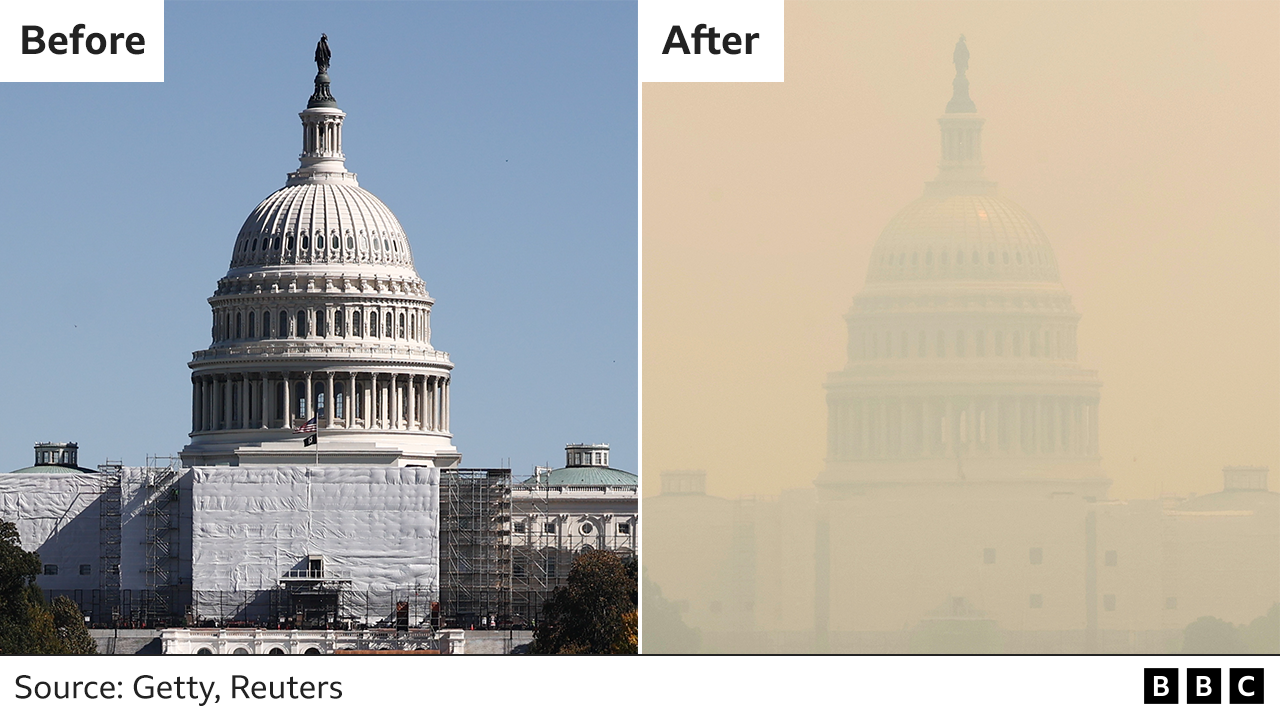
School field trips and sporting events have been canceled due to the smoke, and public health officials have advised people to avoid outdoor exercise and limit their exposure to the smoke as much as possible because the air is hazardous to their short- and long-term health.
According to NASA, winds typically move smoke from wildfires in the Quebec region to the east and out to sea, but a low pressure area over Prince Edward Island has caused the smoke to move south to the United States.
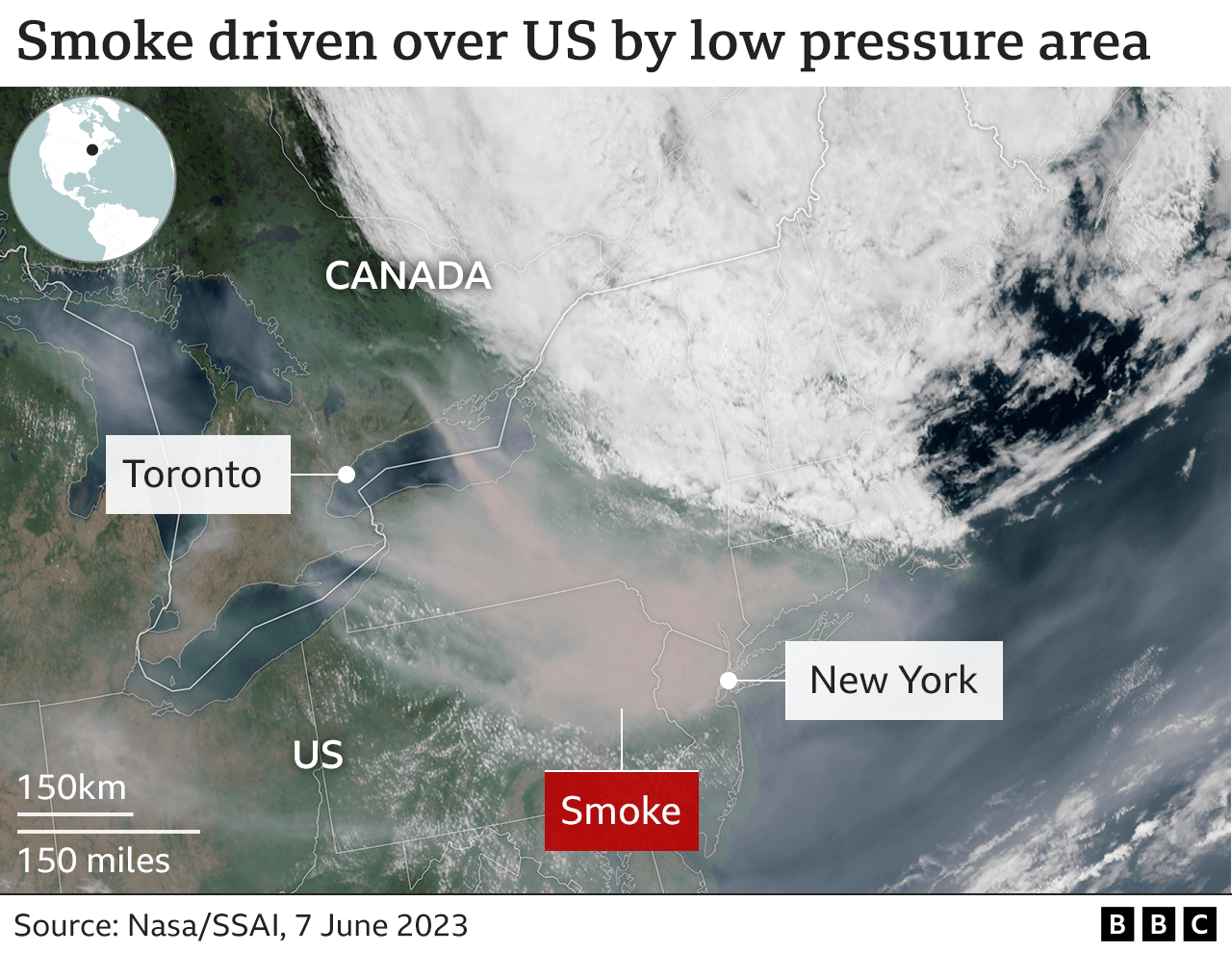
According to atmospheric scientist Ryan Stauffer, the surface smoke pollution from New York to the DC area is the worst it has been since at least July 2002, when the Quebec fires caused a problem of a similar nature, and it may get worse.
Yes is the quick response. More than 3.5 million hectares, or 12 times the 10-year average for this time of year, have already been burned this year, according to the Canadian Wildland Fire Information Service, putting it on track to be a record year.
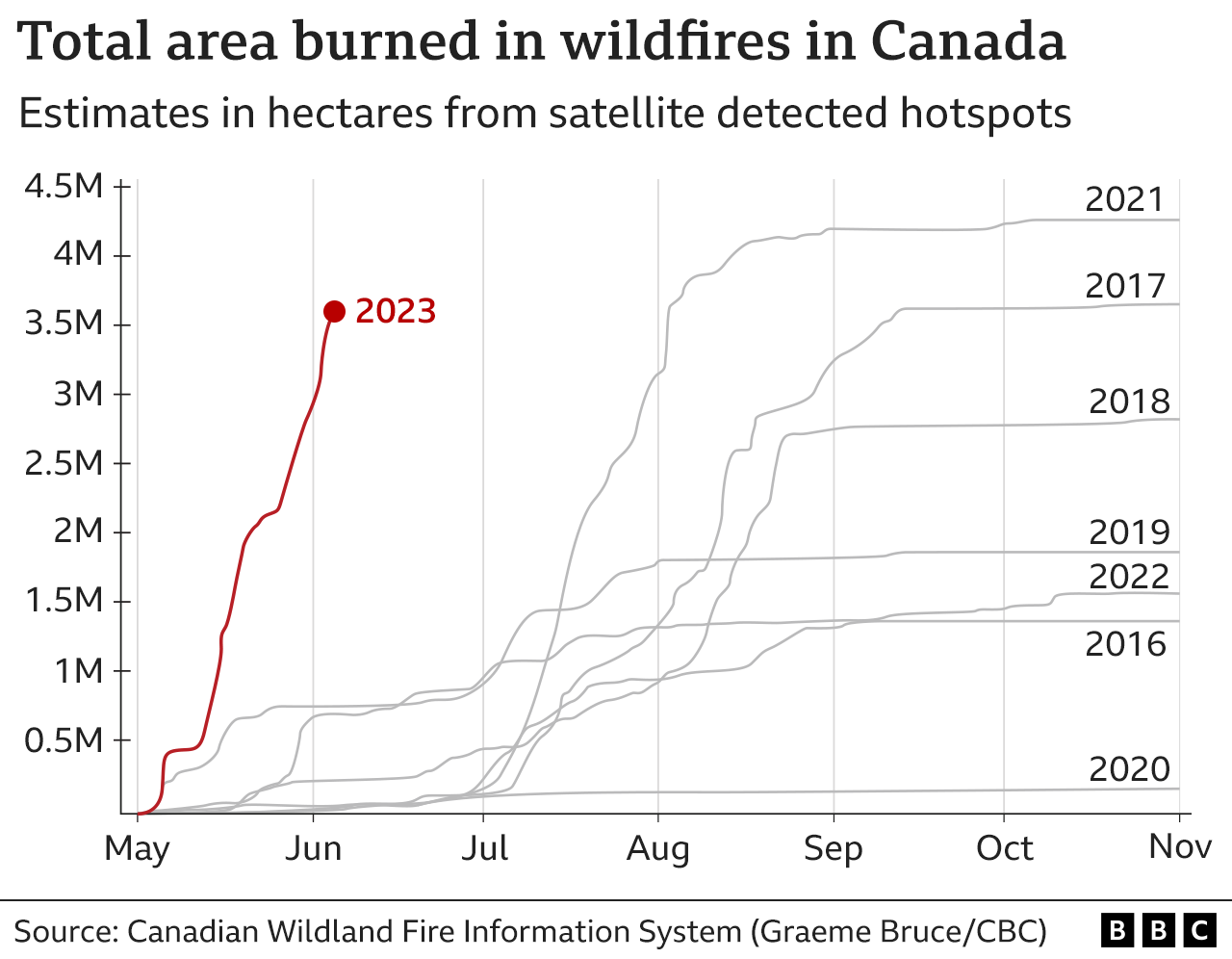
The cause of the trend, according to experts, is a warmer and drier than usual spring, and these conditions are expected to last through the summer.
The 2,000 fires that were reported this year are most likely the result of human activity, but some of them, particularly in Quebec, were thought to have been started by lightning strikes.
Cities in North America had the worst air quality in the world on Thursday morning, according to data from the US Environmental Protection Agency's Air Quality Index (AQI).
A level above 200 is rated as very unhealthy, and once it reaches 300, it is considered hazardous by the agency. For instance, some areas of Janvier in Alberta had a peak AQI of 338, while areas of Washington DC reached 293.
And if you compare this year's air quality to last year's, you can see in some cities how it has changed by looking at the daily averages.

The daily averages have changed much less, according to a similar table for a number of other cities around the world.
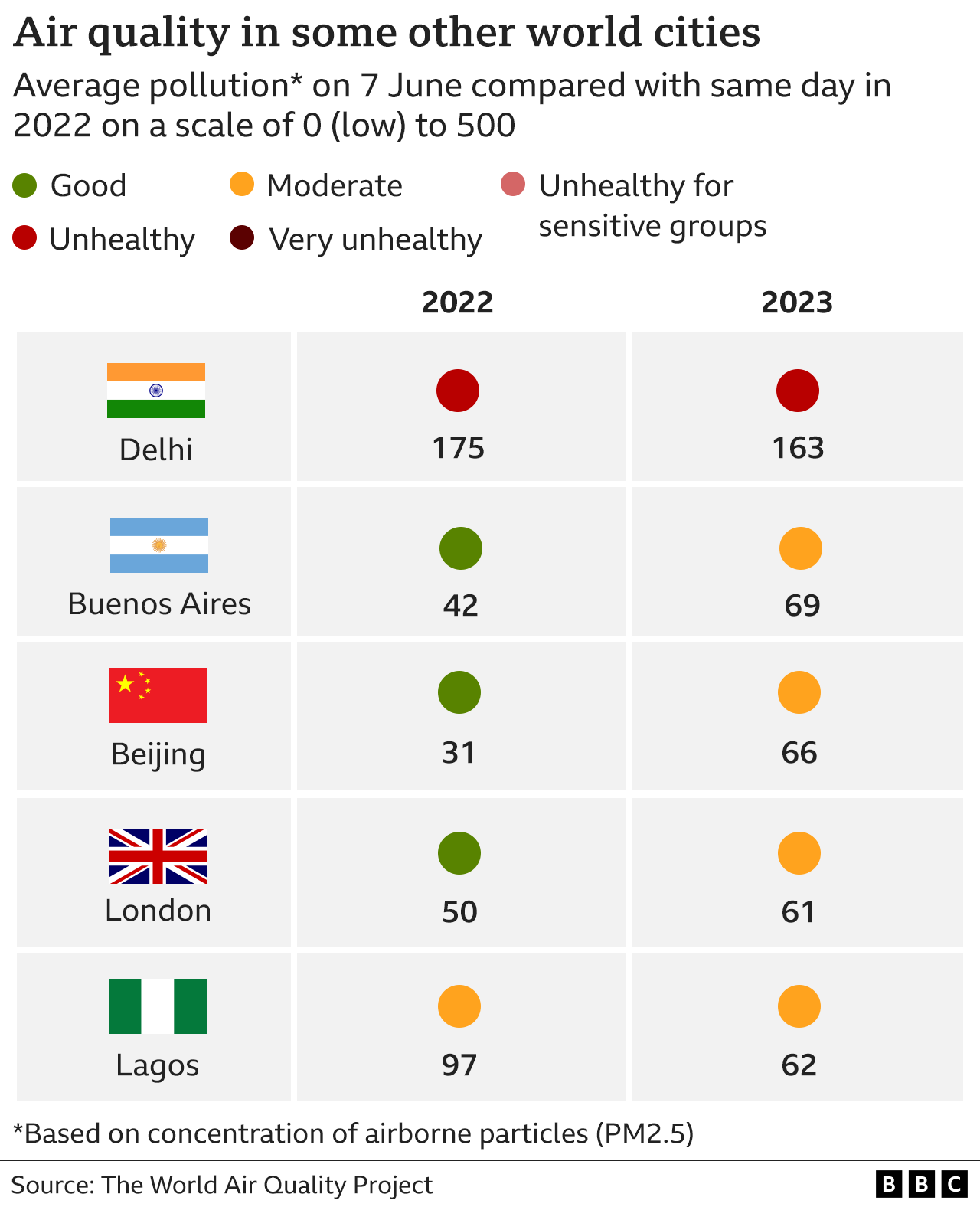
This weekend, a new area of low pressure is predicted to move north from the south, bringing cooler weather to the northeast and mid-Atlantic states.
A ridge of high pressure that is spanning eastern Canada, however, may trap the smoke there and even exacerbate the situation until rain arrives next week.
Tural Ahmedzade, Kady Wardell, Erwan Rivault, Chris Clayton, and Kate Gaynor contributed reporting and graphics, respectively.

